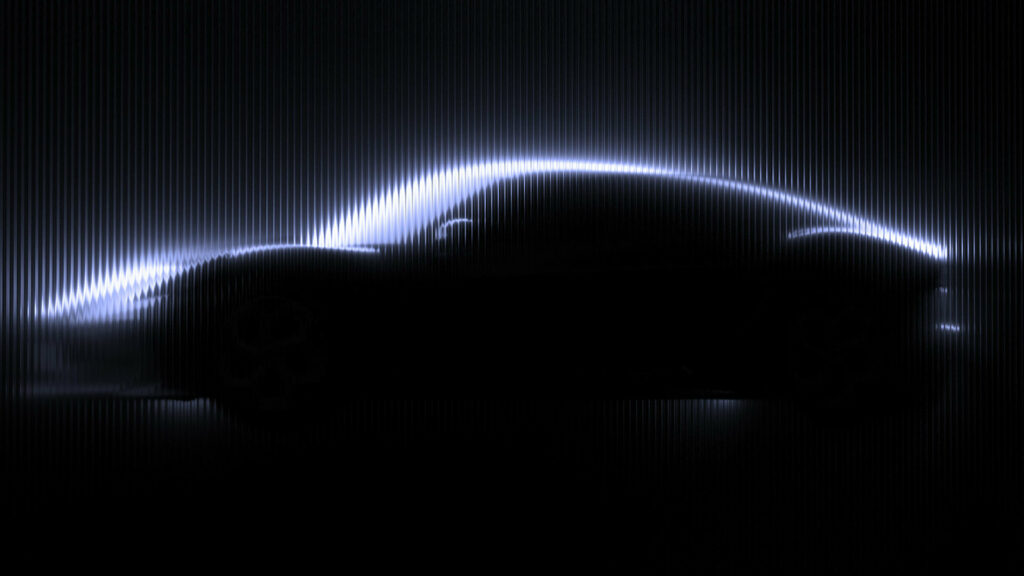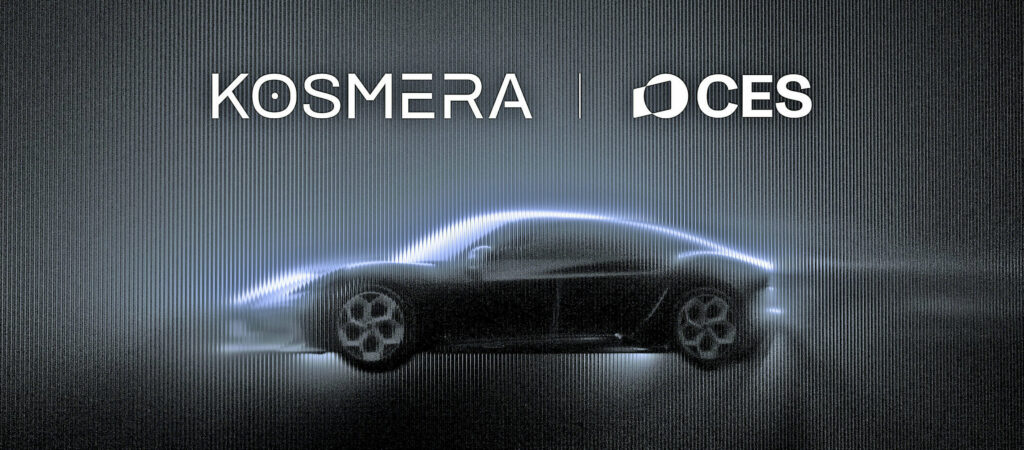The World Is About To Get A New Hyundai Ioniq The US Will Never See

- Hyundai’s smallest Ioniq debuts with practical five-door design.
- All-electric powertrains could offer up to 400 miles of range.
- Styling draws influence from the coupe-like Three Concept.
Electric vehicle sales may be cooling off with the rollback of government incentives in the United States, but Hyundai isn’t lifting its foot off the pedal just yet. In fact, it’s charging ahead with its most compact EV after the Inster. Named the Ioniq 3, this practical five-door hatch slots below the Ioniq 5 and Ioniq 6 in both size and price.
Read: Audi A4 Returns With Concept TT Styling To Give BMW Something To Worry About
Previewed by the recent Concept Three, the Ioniq 3 could become one of Hyundai’s most significant global EVs, combining affordability with everyday usability. Camouflaged prototypes have already been spotted testing out in the open, hinting that an official debut is just around the corner. Here’s a look at everything we know so far.
Striking the Middle Road
Unlike its larger siblings, the Ioniq 3 avoids polarizing the public with a look that’s easier on the eye. Prototypes confirm that it retains the Concept Three’s coupe-like proportions, although the front fascia is toned down with more conventional battery-cooling intakes and slim pixel DRLs split from the main headlamps underneath.

From the profile, it trades the concept’s slim-frame windows for clamshell items (welcome back to the 90s). Elsewhere, it’s a clean, uncluttered profile with smooth surfacing and intersecting lines drawn from Hyundai’s ‘Art of Steel’ design language.
The rear features a high-mounted full-width tail light cluster with LED pixel elements and a split-glass hatch configuration similar to that of Toyota’s Prius. The concept’s translucent aero elements and wild lower diffuser won’t make the cut, yet it still sports a subtle spoiler.
A Tech-Focused Interior
SH Proshots
In a significant departure from Hyundai’s existing lineup, the cabin offers an all-new experience with a separate digital instrument cluster and a large Tesla-style infotainment display.
Also: BMW’s Largest SUV Is About To Get A Lot More Interesting
The screen runs Hyundai’s new Pleos Connect system, which is built on Android Automotive OS, bringing cloud-based user profiles (allowing owners to download features on demand) and conversational voice control for navigation and other vehicle functions.
Importantly, spy shots confirm the presence of physical buttons for HVAC controls below the infotainment screen. Elsewhere, the 5-seat cabin follows the same design theme as other Ioniq models, with minimalist door cards and ovoid trim elements.
Other highlights include Apple CarPlay Ultra compatibility, ambient lighting and enhanced Level 2 driver assistance.
Platform, Powertrain, and Battery

While key specs remain under wraps, we know the Ioniq 3 will ride on a pared-down version of the E-GMP platform. Unlike the 800-volt architecture used in the Ioniq 5 and 6, this model runs a 400-volt system, helping to keep costs in check.
It shares much of its underpinnings with the upcoming Kia EV4, meaning a single-motor, front-wheel-drive layout is expected at launch, delivering 201 hp (150 kW). A dual-motor setup may follow in a potential N performance trim.
SH Proshots
Two Lithium-ion NCM battery configurations are said to be on the cards, with the smaller packing coming in at 58 kWh, while the larger one muscles up 81.4 kWh. The latter should be good for a range estimate of 390-400 miles (628–644 km), and both offering V2G (vehicle-to-grid) and V2L (vehicle-to-load) capabilities.
Rivals and Reveal

Key rivals include Kia’s EV3 and EV4 (essentially an Ioniq 3 in different clothing), Volkswagen ID.3, Cupra Borne, Peugeot e-308, Mini Aceman Electric, MG4, BYD Dolphin, and Skoda Enyaq.
See: Kia’s Smallest EV Could Become One Of Its Most Thrilling Performance Models
With thin camouflage and key interior tech already known, we expect a full debut within the next six months and a global rollout by 2027. North American availability? Sorry folks, as this will be built in Turkey, it won’t be offered in the States.
Should Hyundai bring the Ioniq 3 to the USA? We’d love to hear your views in the comments below.


























































 This article examined nontraditional student transportation scenarios that fall outside standard home-to-school routes on school buses. It explored how districts are adapting to serve students with disabilities and special needs who need alternative schedules and specialized programs. The piece emphasized flexibility, collaboration and policy considerations required to safely and effectively manage atypical transportation models.
This article examined nontraditional student transportation scenarios that fall outside standard home-to-school routes on school buses. It explored how districts are adapting to serve students with disabilities and special needs who need alternative schedules and specialized programs. The piece emphasized flexibility, collaboration and policy considerations required to safely and effectively manage atypical transportation models. Focusing on one of the most persistent safety threats in pupil transportation, this article addresses strategies to reduce illegal passing of stopped school buses. It highlighted the role of public awareness campaigns, stop-arm cameras, and enforcement partnerships, reinforcing the importance of both education and technology in protecting students at bus stops.
Focusing on one of the most persistent safety threats in pupil transportation, this article addresses strategies to reduce illegal passing of stopped school buses. It highlighted the role of public awareness campaigns, stop-arm cameras, and enforcement partnerships, reinforcing the importance of both education and technology in protecting students at bus stops. Procurement and decision-making challenges faced by transportation departments, particularly as districts evaluate new vehicles, services and technologies, underscore the importance of planning, transparency and stakeholder input when making large-scale transportation investments.
Procurement and decision-making challenges faced by transportation departments, particularly as districts evaluate new vehicles, services and technologies, underscore the importance of planning, transparency and stakeholder input when making large-scale transportation investments. One of the most-read magazine articles of the year looked at emerging AI trends shaping student transportation. Topics include predictive maintenance technologies, data-driven operations and forward-thinking approaches to safety and efficiency. The article encouraged readers to view innovation as a proactive tool rather than a reactive solution.
One of the most-read magazine articles of the year looked at emerging AI trends shaping student transportation. Topics include predictive maintenance technologies, data-driven operations and forward-thinking approaches to safety and efficiency. The article encouraged readers to view innovation as a proactive tool rather than a reactive solution.


 Celebrating a decade of recognizing excellence, this article highlights the critical role maintenance professionals play in student transportation. It honored the dedication, expertise and behind-the-scenes work of garage staff who keep fleets safe, reliable and road-ready every day.
Celebrating a decade of recognizing excellence, this article highlights the critical role maintenance professionals play in student transportation. It honored the dedication, expertise and behind-the-scenes work of garage staff who keep fleets safe, reliable and road-ready every day. This article explores technology solutions designed to support long-term transportation goals rather than short-term fixes. Topics included vehicle systems, software integration and tools that improve safety, accountability, and operational visibility for transportation departments.
This article explores technology solutions designed to support long-term transportation goals rather than short-term fixes. Topics included vehicle systems, software integration and tools that improve safety, accountability, and operational visibility for transportation departments.
 The most-viewed magazine article of 2025 spotlighted emerging leaders in the student transportation industry. By recognizing rising professionals making meaningful contributions, the article reflects the industry’s focus on mentorship, succession planning and cultivating the next generation of transportation leadership.
The most-viewed magazine article of 2025 spotlighted emerging leaders in the student transportation industry. By recognizing rising professionals making meaningful contributions, the article reflects the industry’s focus on mentorship, succession planning and cultivating the next generation of transportation leadership.